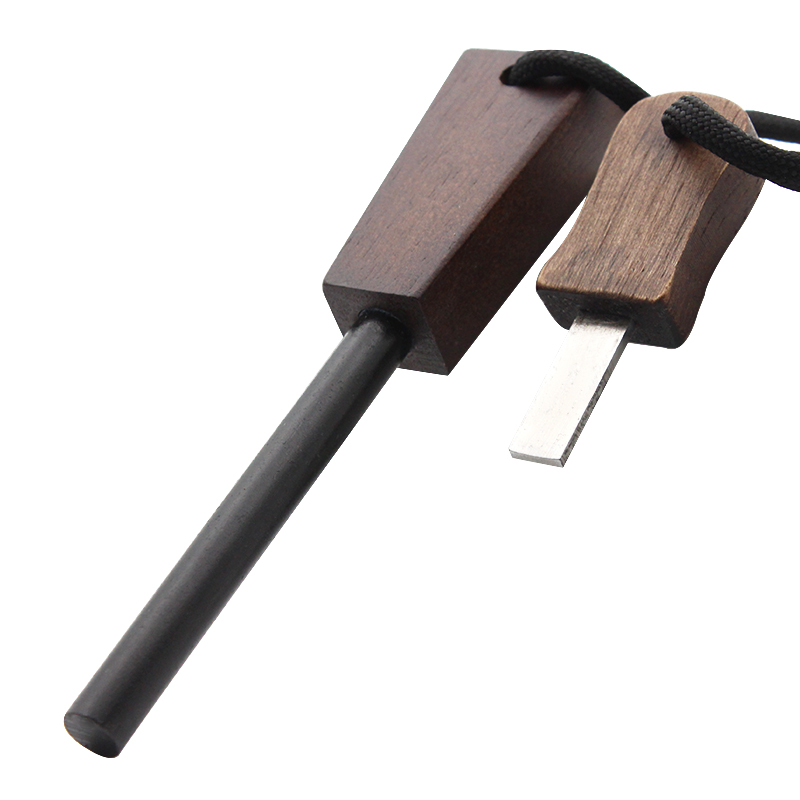Camping Wooden fire starter lighter
An entry level flint steel with practice can easily and quickly start a fire. It is the most important tool in your survival kit. Suitable for military, hunting, fishing and other outdoor, camping activities, also good for survival tool.Produces a high-heat sparks easily, just ignite tinder like cotton wool, dry grass or bark.
Lightweight, safe and portable.
Applicable at anywhere, anytime and any condition, including moist wet weather or low temperature.
Efficient and durable enough to accompany you on every adventure.
Prefect fit for
Hiking,
Camping,
Hunting,
Fishing,
BBQ,
Gas Camp Stoves.
| Material | Mixed metals including Magnesium, Ferro flint + Iron striker |
| Firesteel | 70*8mm (total is 120mm length) |
| Net weight | 45g |
| Feature | Waterproof, Weatherproof |
| Logo | Laser Engraving |
| Flint lasts | Over 15,000 strikes |
Step 1: Scrape tool with any knife or scrape to create small magnesium shavings.
Step 2: Accumulate magnesium shavings into a s small pile and place next to tinder (fatwood, natural hemp, paper, leaves, small twig, bark, etc)
Step 3: Quickly scrape the lighter rod to create a spark onto the kindling
Upon first use, draw the scraper over the fire rod to remove the black protective layer. The fire rod must be silver-grey before it can be used to light a fire.
Professional technical engineer dedicated to guide you
According to your actual needs, choose the most reasonable overall design and planning procedures
